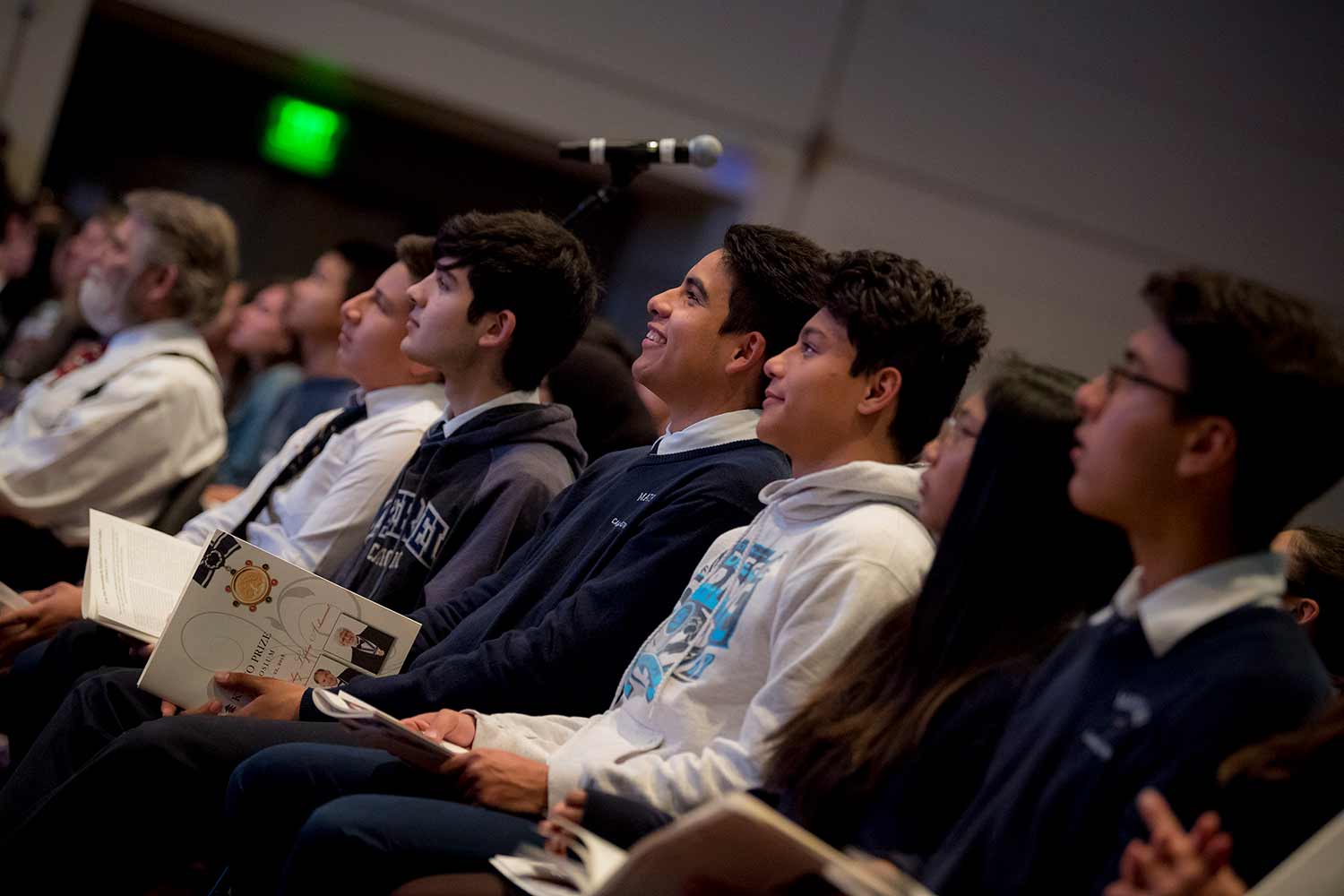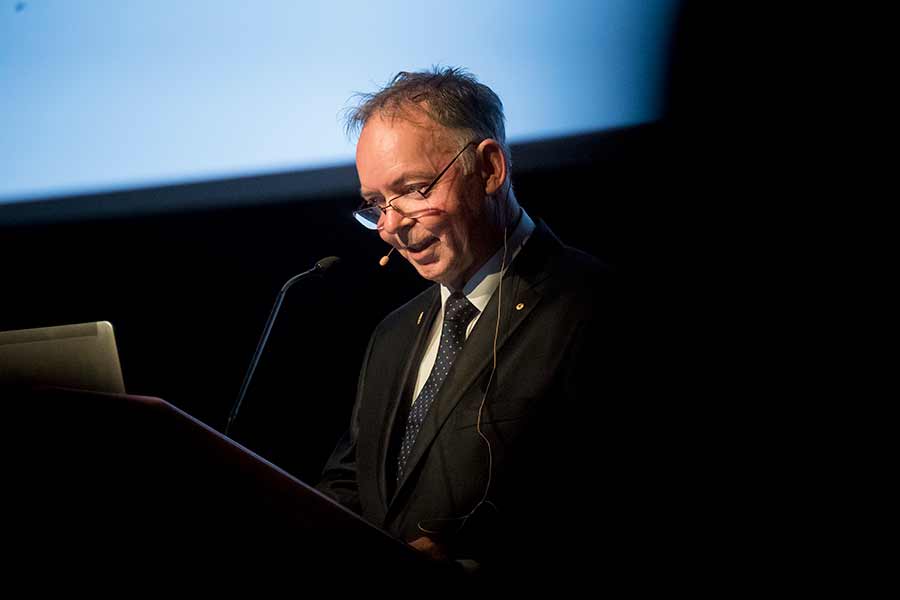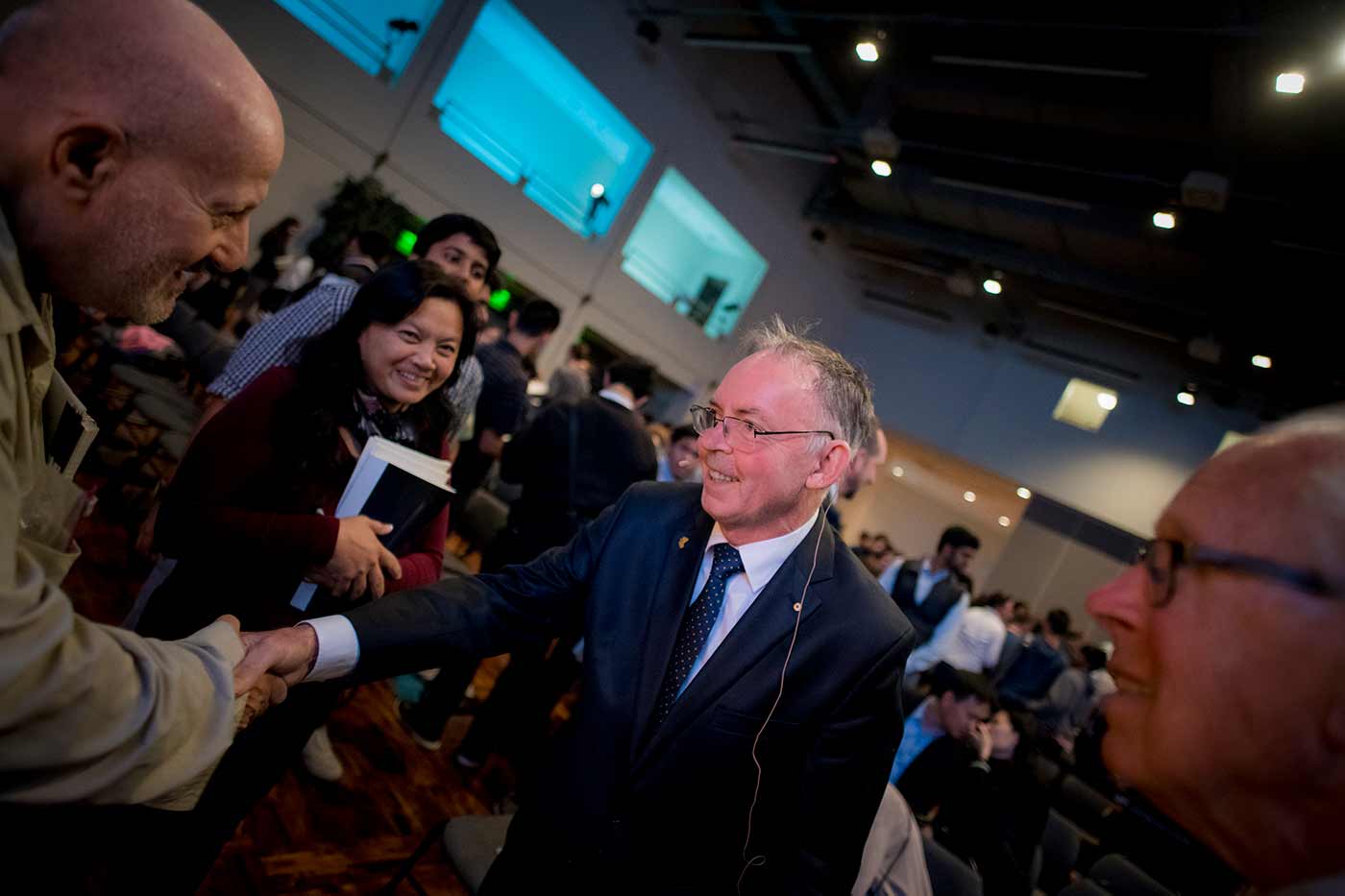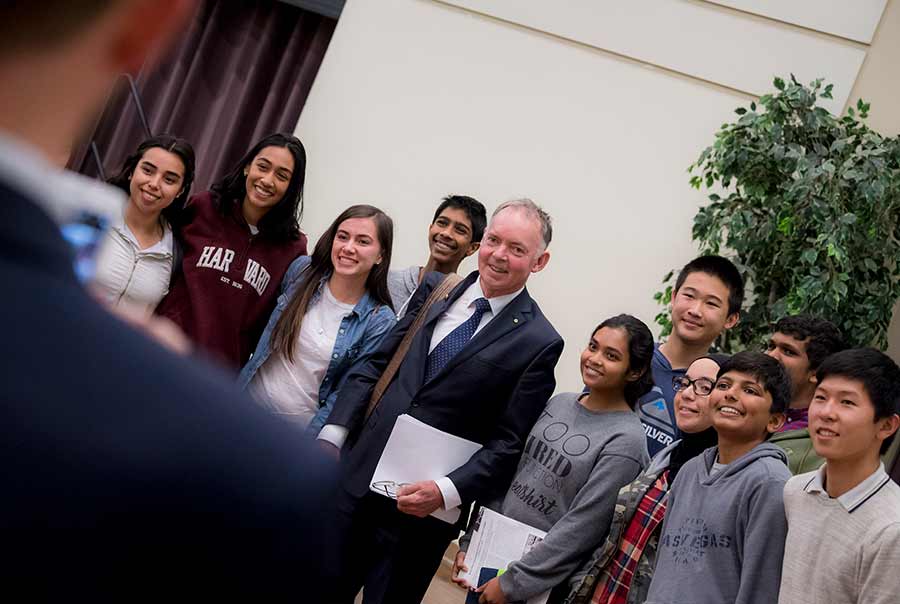
By:
- Kristin Schafgans
Published Date
By:
- Kristin Schafgans
Share This:

Photos by Erik Jepsen/UC San Diego Publications
Kyoto Prize Symposium Inspires Future Scientists
Nearly 300 high school students from San Diego and Tijuana arrived on our campus recently to hear from one of the world’s brightest minds in science: renowned plant physiologist Graham Farquhar. Farquhar was awarded the 2017 Kyoto Prize—Japan’s highest private award for lifetime achievement, presented by the Inamori Foundation—in recognition of his contributions to environmental science.

Kyoto Prize laureate Graham Farquhar
Farquhar developed process-based models for photosynthesis that have advanced understanding of how plants work, how much water they need, and how much they can grow as atmospheric carbon dioxide levels increase. His work has led to the development of drought-tolerant strains of wheat and other crops, and has advanced understanding of how water evaporation in plants affects climate change.
Farquhar’s March 21 presentation, which was free and open to the public, was part of the 17th annual Kyoto Prize Symposium, hosted by UC San Diego, San Diego State University, University of San Diego and Point Loma Nazarene. The annual celebration brings the newly minted Kyoto Prize laureates to San Diego to inspire scholars, scientists, community members and students alike to make a positive impact on the world.
“UC San Diego and the Inamori Foundation are strongly committed to scientific progress, cultural advancement and human betterment,” said Chancellor Pradeep K. Khosla. “Our university’s mission of research, education and public service is consistent with Dr. Inamori’s belief that there is no higher calling than to work for the greater good of all humankind.”
With support from the Inamori Foundation, UC San Diego facilitated bringing the high school students—many from underrepresented areas of San Diego, as well as Tijuana—to hear Farquhar’s talk. The opportunity aims to introduce students to the university and the idea of pursuing a career in STEM (science, technology, engineering and mathematics) fields.

The annual symposium brings the Kyoto Prize winners to San Diego to inspire scholars, scientists, students and community members to make a positive impact on the world.
During his presentation, Farquhar described not only his research, but also his career path—including the challenges, mentors and chance encounters that shaped his journey. UC San Diego biologist Maarten Chrispeels, who introduced Farquhar, pointed out three important lessons students can learn from his story.
“Get training in many areas, choose an important problem, and be open to new ideas,” said Chrispeels. “Do those three things, and the big prize might be within your grasp.”
Farquhar studied physics, math and biology during high school and university with the goal of becoming a biophysicist. Early in his research career, he focused on a key question about plants. Plants have tiny holes called stomatal pores in their leaves that allow carbon dioxide to enter while at the same time permitting water vapor molecules escape. Farquhar wondered how plants balance these two processes to maximize growth without drying out. His interdisciplinary training led him to propose a model for the process of photosynthesis that is now widely used by crop scientists and climatologists alike.
Later, Farquhar collaborated with agricultural scientists to study water efficiency in plants—specifically wheat. They discovered that by measuring the ratio of two different carbon isotopes in plants, they could predict which varieties use less water and are more drought tolerant.

UC San Diego helped bring high school students from San Diego and Tijuana to campus to hear Farquhar’s talk.
The Kyoto Prize winner also described the friends and mentors who helped him succeed in graduate school, and collaborators who were instrumental in his scientific career. He spoke about his love for classical ballet, a hobby that he took up at the same time he began his Ph.D. studies. Dance helped him to be more creative and efficient with his time while lifting his spirits when the research became challenging, he said.
“The combination of dance and biophysics was a good one,” he said, encouraging students to find their own creative outlets and work-life balance.
He also described setbacks he experienced, including a pivotal moment in graduate school when a paper came out on the same topic he had been working on. Farquhar took it as a disaster, a roadblock to his Ph.D. Then his advisor helped him formulate a new, more creative question to investigate based on the published paper. This disaster, he told the audience, prompted him to do something completely novel.
After sharing his scientific and personal journey, Farquhar concluded his talk with gratitude for being named a Kyoto Prize laureate, and he stressed the importance of working toward the betterment of humankind.
“The final message from me is a simple one. The most important things in life are to struggle to improve, to struggle to be honest, and to struggle to re-evaluate one’s prejudices.”
Share This:
You May Also Like
Stay in the Know
Keep up with all the latest from UC San Diego. Subscribe to the newsletter today.


